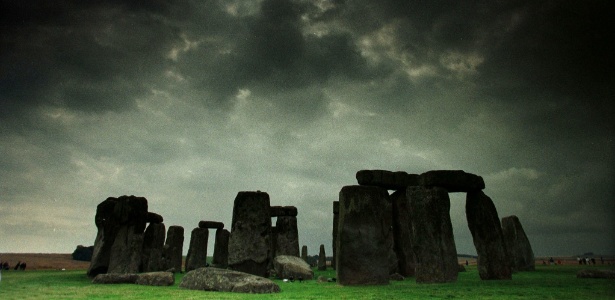A study published today (2) has unraveled the mystery of the famous stone temple at Stonehenge in southern England and revealed the way the ancient infrastructure functions as a calendar.
This news was reported in the peer-reviewed scientific journal Antiquities by Timothy Darville, Professor of Archeology at Bournemouth University. According to the researcher, the stones that make up the monument helped the ancient British to keep track of the days, weeks and months of the solar year.
The expert explained that the calendar represented by the stone pillars refers to a system of 12 months of 30 days each with three weeks of 10 days. Doubling these items results in 360 days. In addition, an “extra” month was implemented, with 5 more days, thus ending 365 days in the year.
“The proposed calendar works in a very straightforward manner. Each of the thirty stones in the circle represents a day in a month, and is itself divided into three weeks, each of 10 days. The four outside the circle provide signs indicating the day’s leap,” Darville reinforced.
In the center of the monument were arranged in the shape of the letter “U” five structures called triliths, which represent two stone columns with a stone keel lying on top. Each of them symbolizes five days of the “overflow” calendar month.
However, Darville also argued in his research that the arithmetic also needs a certain adjustment of the calendar to be assertive. The sidereal year does not last exactly 365 days, according to the professor, but in fact 365 days with the addition of the quarter. This explains why February, in the modern calendar, has an extra day every four years, when a leap year occurs, which lasts 366 days.
Evidence also indicates that the counting of the year should be done only from the moment the sunset was exactly in line with the entrance and exit of the stone circle, something that happened on the winter solstice.
The tropical solar calendar, which extends for an additional 10 days and months, is similar to the calendar used at the time in ancient Egypt and researchers say could be evidence of links between Britain and other civilizations.
For Darville, Stonehenge was also a monument to ancestral religious purposes, so knowledge of the solar calendar was considered sacred items and motivators for ceremonies. “It is a place where the time of festivities and feasts is connected with the very fabric of the universe and the celestial movements in the sky.”
Archaeologists believe Stonehenge was built from 3000 BC to 2000 BC. The surrounding circular land bank and moat, which make up the earliest stage of the monument, date from around 3100 BC.

“Music fanatic. Professional problem solver. Reader. Award-winning tv ninja.”






More Stories
Couple retakes glacier photo after 15 years, surprised by changes: ‘It made me cry’
Two killed in hotel collapse in Germany – DW – 07/08/2024
Lula speaks for half an hour on phone with Biden about Venezuela’s electoral impasse | Politics